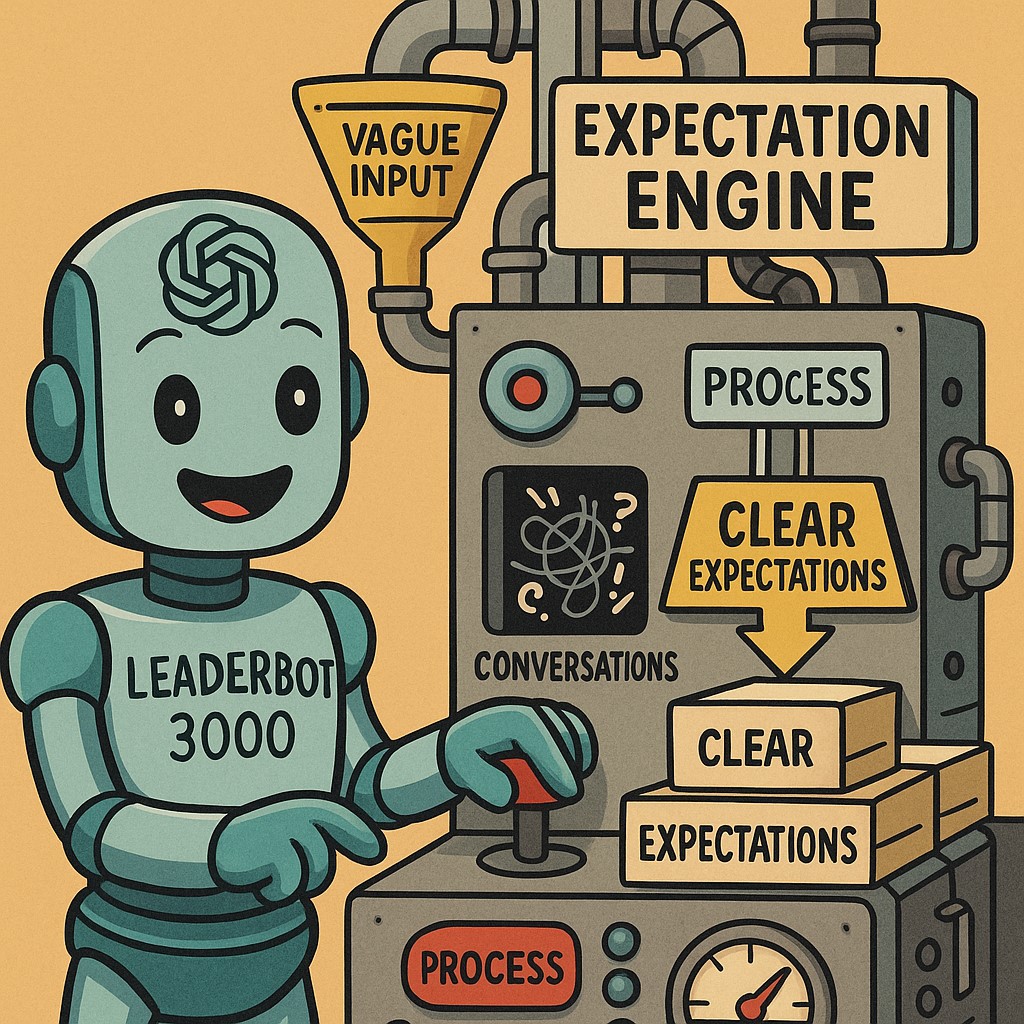If you want to be happy in leadership—and help your team thrive—learn to set expectations and match them.
That’s it. That’s the formula.

It’s not glamorous, but it works. And most leaders either skip it entirely or do it halfway.
When you set expectations too high or unrealistic, you create anxiety and burnout. When you set them too low, people disengage and drift. But when you take the time to set clear, thoughtful, achievable expectations—and then consistently manage them—your team becomes a machine.
Here’s how to do it right.
Start Strong: Set Expectations Early and Clearly
The beginning of any project, relationship, or role is your golden window to define what good looks like. This doesn’t mean writing a 20-page doc. It means being clear:
- What does success look like?
- How fast are we moving?
- What standards are we holding?
Set expectations that challenge but don’t crush. Leave room for growth. And remember, you can always raise the bar later. But lowering it is way harder.
One-on-Ones Are Where Expectations Are Managed
This is the number one tool in your toolkit.
Use regular one-on-ones (weekly or bi-weekly) to check alignment. If someone’s veering off course, don’t wait for a blow-up or a formal review. Course-correct in real time.
And here’s a tactic that makes these convos easier: Praise the person, question the process.
Instead of saying “you dropped the ball,” try “this part of the process didn’t work—what do you think went wrong?” This lets you stay on their side, while still being direct.
Avoid the Surprise Review
If you’ve ever had someone respond to a review with “Wait, what? I didn’t know any of this…” then expectations were broken.
Your job is to make sure feedback isn’t seasonal. It should be constant, subtle, and baked into your rhythm. Good expectation-setting means nothing in a performance review should ever be a shock.
Two-Way Street: Manage Their Expectations of You Too
It’s not just about what you want from them. You also need to understand what your team expects from you.
- Do they expect fast decisions?
- More structure?
- Career growth?
- A buffer from chaos above?
Ask. Listen. Repeat what you’re hearing to make sure you got it. And then deliver.
When expectations go both ways, trust builds fast.
Silence Is a Breeding Ground for Assumptions
The further away people get from you—time zone, seniority, reporting line—the easier it is for misalignment to creep in.
If you don’t say anything, people will fill in the blanks. And what they imagine usually doesn’t match reality.
So stay visible. Stay vocal. Use updates, Slack posts, project boards, whatever—just don’t go dark.
You’re in It for the Long Game
Setting good expectations is a leadership skill that compounds over time.
Do it right, and your team starts self-correcting. Your one-on-ones get easier. Performance improves without the drama. Your manager starts giving you more trust. And you never have to scramble to explain yourself or fix things after the fact.
Leadership becomes a lot smoother when no one’s surprised.
💡Liked this post?
Get real-world solutions like this in your inbox—join the newsletter.